‘I want to raise questions with my work.’ Artists of color take spotlight at Miami show
A humble offering sits on the floor. A bag of white rice. Bowls of purple bougainvillea petals. A full glass of water for the ancestors. And bottles of rum and ginger beer, representing different Caribbean islands.
Each item was carefully placed on a blood red cloth. Above the ritual, a massive blue painting offers the viewer some advice in Arawak: “AJUPAKAKO EPA NAMAKO.”
“Wake up and listen,” translates Kurt Nahar, an artist from Suriname who dedicated the artwork to his home country’s indigenous communities. “I did this piece so that their voices [could] be heard because the tradition is slowly disappearing and dying,” he added.
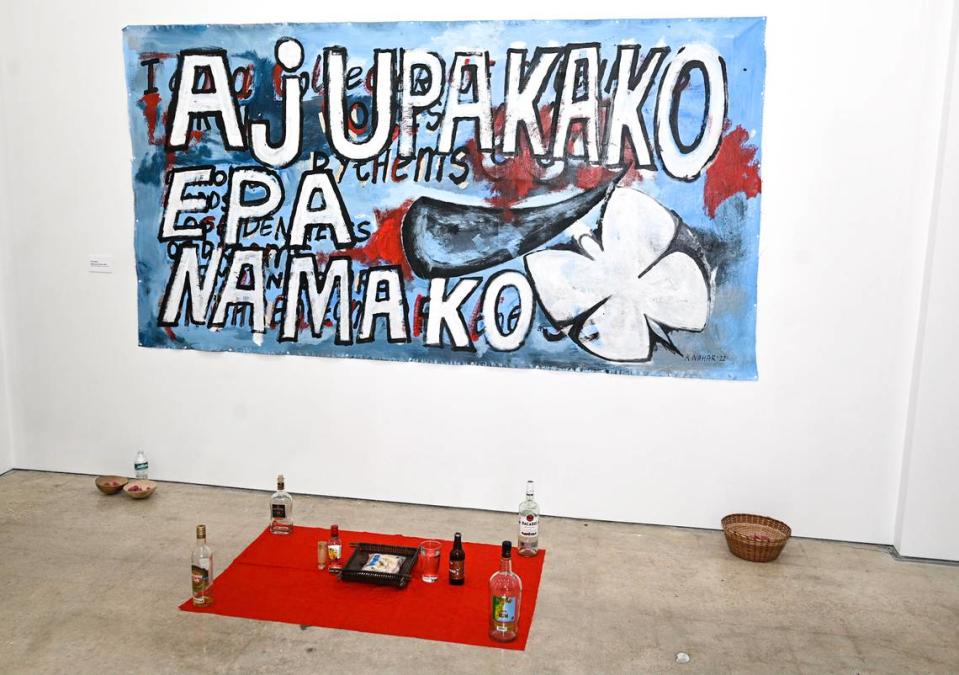
Nahar was one of several artists who traveled from across the Caribbean and United States to see their work at “Depth of Identity: Art as Memory and Archive,” an art exhibition dedicated to exploring the identities of Caribbean artists and artists of color. The show, which opened Thursday night, is on display until Oct. 20 at Green Space Miami, a community arts space in the MiMo District.
The show was curated by Rosie Gordon-Wallace, the founder of the Diaspora Vibe Culture Arts Incubator, an organization that uplifts and advocates for emerging Caribbean artists. The show represents 19 artists from over a dozen countries and cultures, including Jamaica, Cuba, Kenya and Japan.
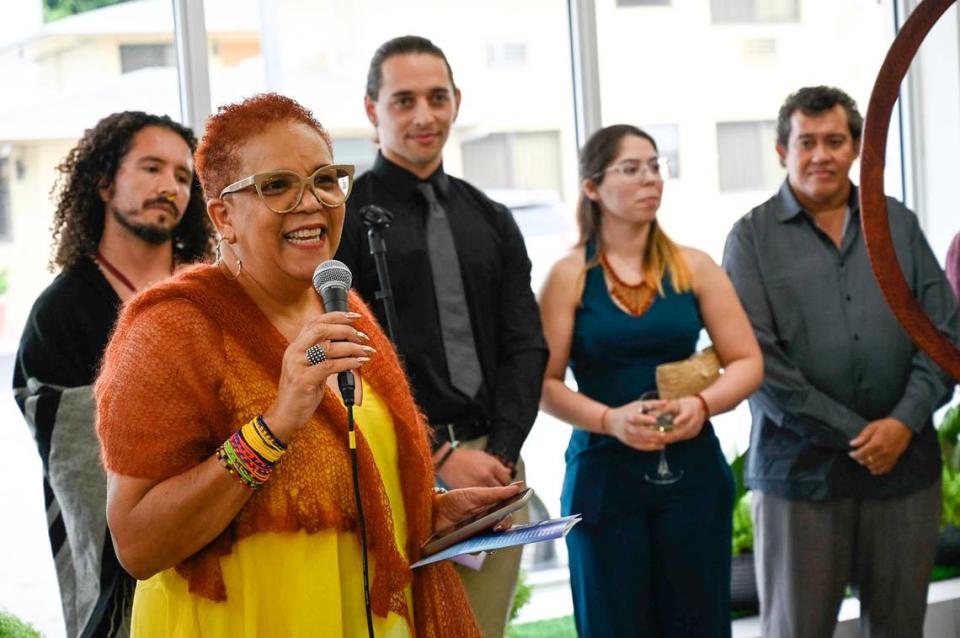
Gordon-Wallace, who is Jamaican, explained that the exhibition is more than a celebration of different cultures. It’s a way for underrepresented artists to “sanctify the fact that we belong” in a country — or in an art world — where they are overlooked, she said. “Depth of Identity” touches on the nuances and components of a person’s identity, like race, class and immigration status.
“We keep trying to fit into the American model. It’s almost as if you have a car that’s out of style,” she said. “Because you wonder, why is it that Caribbean artists don’t get selected for bigger shows? Why is it that they are accidentally ignored when they have gone to prestigious schools?”
The exhibition was also a catalyst for deep national pride. Nahar, who wore a Suriname flag pin on his collar, said he was honored to represent his home country and find unity among Caribbean cultures.
“What it does is it opens my eyes to bigger things, things that I would never achieve in my career back home,” Nahar said of working with Gordon-Wallace and DVCAI.
Like the bottles of rum on Nahar’s altar, the show highlights the Caribbean’s rich diversity. Though the artworks in the exhibition touch on different themes, as a whole, the show is bold, colorful and striking.
Guyanese artist Suchitra Mattai created shimmering portraits with deconstructed saris. Sarasota-based artist Samo Davis explored themes of growth in her sprawling, rainbow-colored sculpture. Jamaican-American artist Aisha Tandiwe Bell installed an actual trap — a cardboard box lined with patterned fabric held up with a stick tied to string — to represent the “traps” society keeps itself in.
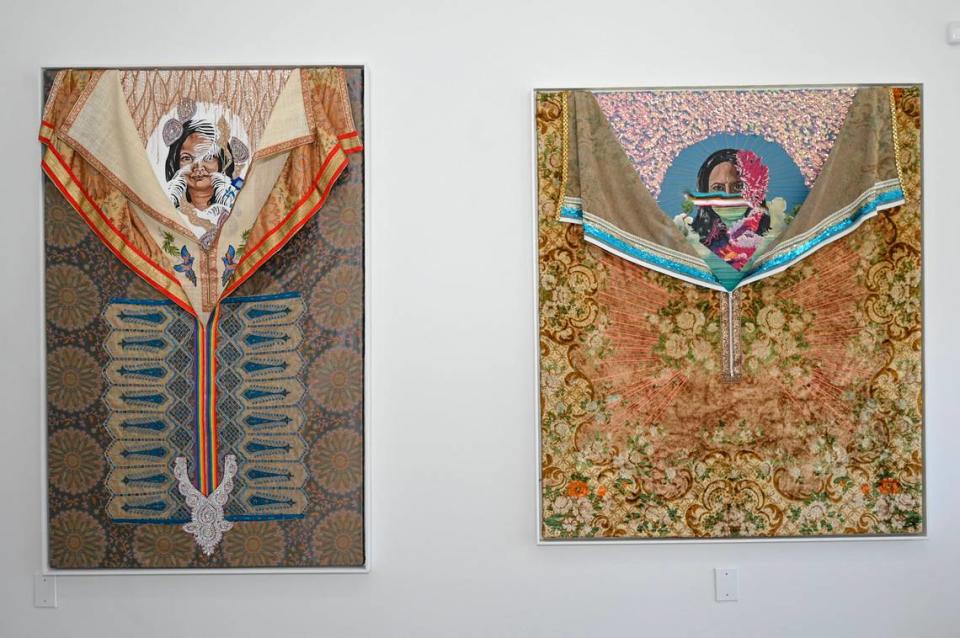
And then there’s Haitian artist Asser St. Val’s three paintings from his “Magical Entities” series: nude orange giants with colorful tendrils for heads flexing and posing their exaggerated bodies in surrealist landscapes. One female figure raises her hand, revealing a symbol on her palm. The works tap into mankind’s innate urge to find magic in objects, like paintings.
“I hope people would view it and understand that there’s something spiritual there,” St. Val said. “They may not understand it, but I hope the work arrests them.”
Though many pieces are highly ornamented and playful, the works also focus on difficult subject matter, like the legacy of slavery and racism in the United States.
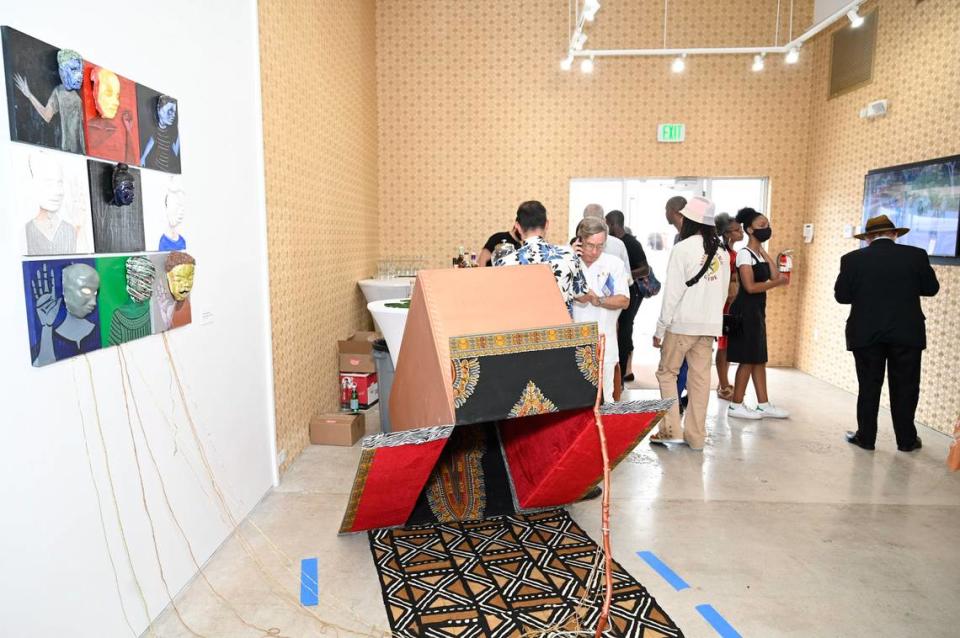
Michael Elliott, a Jamaican artist, tackles these issues head-on in the two paintings he has on display side by side, “Sundae Morning” and “Seeds of the Tide (Clotilda).” At first glance, the respective paintings are just still-life portraits of an ice cream cone and a slice of watermelon.
But the ice cream scoop is actually a crumbled up U.S. Constitution, Elliott explained. Above the scoop, a neon sign reads “JUSTICE SCREAMS,” though only the letters that spell “ICE CREAM” are illuminated. And the watermelon seeds aren’t seeds at all, the artist noted. They’re people.
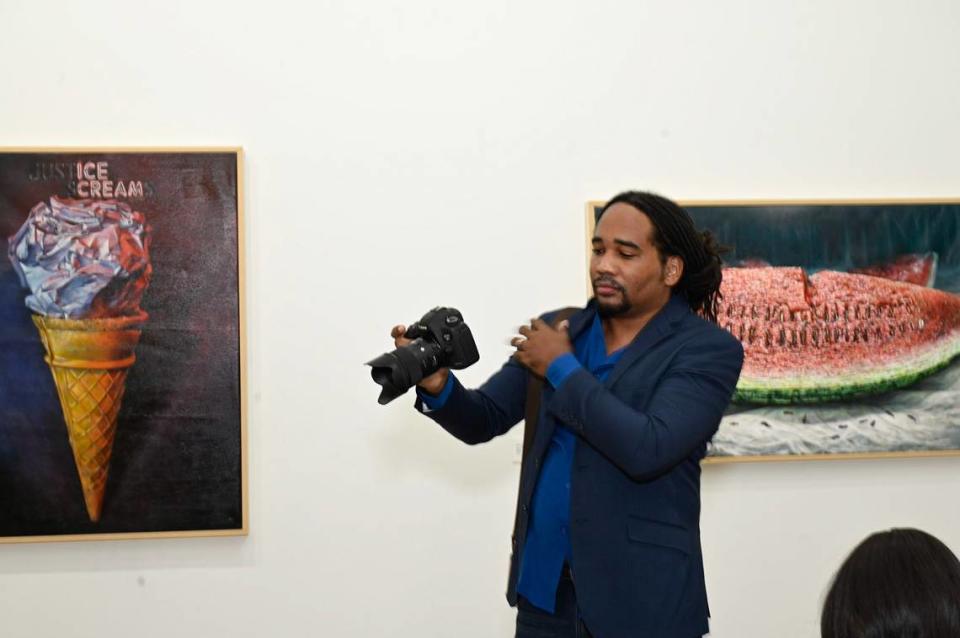
“Sundae Morning” was inspired by a protest in North Carolina where Black church members sat in the white section of a segregated ice cream parlor. “Seeds of the Tide (Clotilda)“ was based on the last known slave ship to arrive in the United States.
Julian Pardo, a Colombian artist who has lived in the United States for 20 years, installed “Primera Linea,” an artwork that comments on police brutality, especially against indigenous communities. It’s a large, sinister mobile. Fake weapons — grenades, clubs and rocks — dangle from a spinning stick.
The work was inspired by the police response to last year’s mass protests in Colombia. Pardo decorated items like the grenades with beads in the style of native Colombian groups. The mobile’s clockwise rotation represents the cycle of violence.
“I want to raise questions with my work,” Pardo said. “I want to create awareness, but also compassion.”
For Autumn T. Thomas, a Denver-based artist, opening night was almost overwhelming.
One of her artworks on display at the show is a large wind chime made with long, hollow, copper tubes. In between each tube is a small, dark piece of wood. It’s the first piece at the entrance of the show. When you look closer, you understand why.
Familiar names are etched on each wooden block: George Floyd, Breonna Taylor, Elijah McClain. The artwork is called “Lift Every Voice,” a reference to the Black national anthem. As she gently ran her hand along the tubes to make the bell-like sounds, Thomas explained that every time a person or a gust of air moves the wind chime, the piece lifts the spirits and voices of Black Americans killed by police.
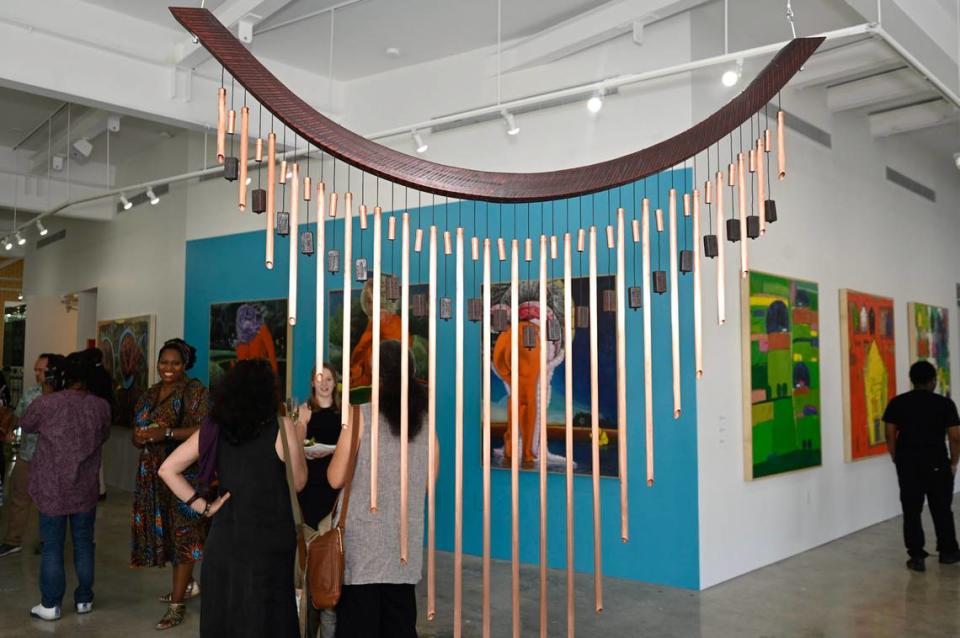
“We’re releasing them from the trauma that they’ve experienced,” Thomas said as the wind chime rang.
As she looked around the gallery space, Thomas shared a sentiment several artists described. This show felt different, and she accredited that to Gordon-Wallace’s generosity and leadership. “Rosie is a special person,” Thomas said.
“I’m a creative amongst creatives, being celebrated. It’s bigger than words,” Thomas said. “I’m full right now.”
Depth of Identity: Art as Memory and Archive
Where: Green Space Miami, 7200 Biscayne Blvd, Miami.
Hours: Wednesday to Saturday, 11 a.m. - 7 p.m. Contact Tanya Desdunes at tanya@dvcaiteam.org for appointments on Sundays.
Info: eventbrite.com. On view until Oct. 20. Free and open to the public.
This story was produced with financial support from The Pérez Family Foundation, in partnership with Journalism Funding Partners, as part of an independent journalism fellowship program. The Miami Herald maintains full editorial control of this work.

